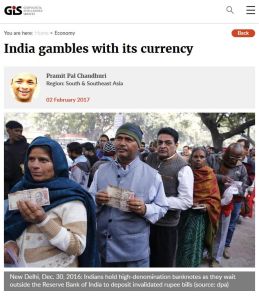Join getAbstract to access the summary!

Join getAbstract to access the summary!
Pramit Pal Chaudhuri
India Gambles with Its Currency
GIS, 2017
What's inside?
The world is waiting to see how India’s surprise move to “demonetize” its economy will fare.
Recommendation
The world is waiting to see whether India’s surprise move in late 2016 to “demonetize” its economy will unleash the country’s latent output, productivity and prosperity. Journalist Pramit Pal Chaudhuri provides a succinct analysis of the experiment’s ripple effects on India’s huge informal sector and how they might boost Prime Minister Narendra Modi’s chances of a second term. getAbstract suggests this information-packed report to financial policy makers, business executives and investors watching the Indian economy.
Summary
About the Author
Pramit Pal Chaudhuri is the foreign editor of the Hindustan Times, an Indian newspaper.


















Comment on this summary